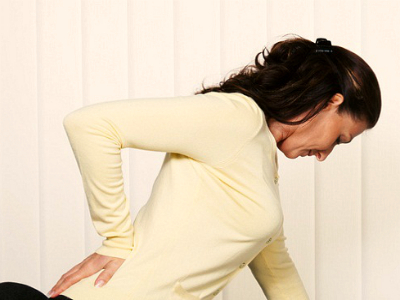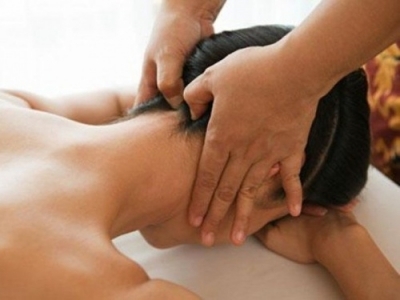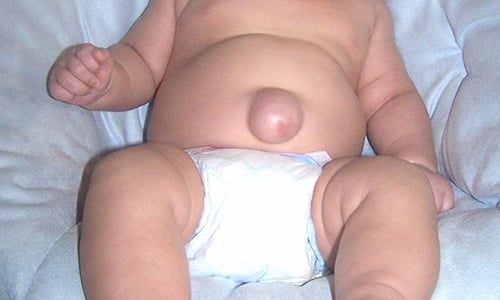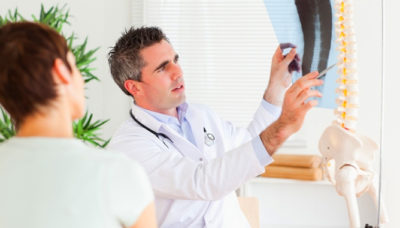Pathological changes of a herniated spine occur in intervertebral disk. Nucleus pulposus, which is located in the center of the disc breaks through the outer shell (the annulus).
Formed in this way forms a protrusion of a hernia, with all the subsequent complications.
Depending on the degree and direction of protrusion, infringed certain areas of the spinal cord, edema, inflammation, acute pain and even destruction of bone tissue of the spine.
Varieties of ailment
Depending on the localization, you can define the following types of herniated discs:
- Lumbar spine (most common case).
- Cervical. Much less common than lumbar hernia.
- Of the thoracic spine. Observed in very rare cases.
Another criterion by which to classify hernia of the spine, is the direction of protrusion of the nucleus pulposus:
- Left or right hand. In this case, the fibrous ring of the intervertebral disc breaks with left or right side, bulge, thus formed, has a compressive effect on the surrounding nerve endings to the spinal cord.
- The protrusion forward. Directed toward internal organs and therefore cannot exert any significant effects on the nerve roots of the spine. Considered the most harmless form of intervertebral hernias.
- The rear protrusion. In this case, the most serious possible consequences. This is because the pathological education might impinge on the spinal cord.
- Schmorl’s Nodule. The protrusion is directed to the upper or lower parts of the bone tissue of the vertebrae. The pressure resulting from this process can have a damaging effect on the vertebra, which, in turn, will negatively affect nearby tissues and organs.
Depending on the degree of development can be described such stages in the formation of intervertebral hernia:
- Protrusion. Deformation of the intervertebral disc, due to the internal pressure of the nucleus. The pathological manifestation of convexity in this case is minimal, can be from 1 to 3 mm and does not cause discomfort.
- The prolapse. At this stage, the fibrous ring is already partially destroyed, but the break has not yet been observed. The protrusion, which is characteristic for this stage is in the range of 3-6 mm.
- Fully formed vertebral hernia. The destruction of the fibrous ring leads to his breakthrough, the kernel is partly outside of the intervertebral disc, sometimes there may be a branch of the protruding part of the nucleus of the primary (sequestration). The dimensions of the convex portion of the hernia at this stage, on average, about 15 mm.
The symptomatic manifestation
What is a hernia? In cases where the hernia is not the result of other pathology (e.g., osteoarthritis), the first signs of its appearance, especially in the lumbar spine, is frequently taken for the effects of fatigue. As the progression of degenerative processes of the intervertebral disc and hernia increase in size, pain becomes more intense, and the symptoms become more pronounced.

If we talk about herniated lumbar, in the initial stages is usually mild aching pain, which appears usually after a busy day or a long stay in an anatomically disadvantageous position.
When the hernia is formed, and the rupture of the intervertebral disc has occurred, the symptoms depend on the direction of protrusion and hernia size. In most cases, is:
- Pain, which can greatly worsen when certain movements, inflammation of the surrounding tissues, redness, swelling.
- There may also be deviations in the work of some internal organs. This happens if you have been violated nerve endings responsible for the particular organ.
- If the hernia is directed toward the spinal cord, you may experience numbness or paralysis of some limbs and even parts of the body, disruption of the internal organs, fainting, jumps in blood pressure and so on.
When the pathological education infringes on the spinal cord, complications can lead to very dangerous consequences, including death.
The symptoms of spinal herniations of the cervical spine:
- Pain in the neck and the back of the head. Is associated with the infringement of the nerve root and caused even a slight (1mm) deformation of the intervertebral disc. So often can occur in the early stages of disease.
- Jumps in blood pressure (usually an increase, up to a stroke). This is due to irritation of the nerve endings associated with the regulatory functions of the brain, caused reflex spasms of the blood vessels can provoke a significant increase in intracranial pressure.
- Headaches. Due to the compression and irritation of nerve endings in areas of the formations degenerative intervertebral cervical disc, you may experience pain in the head or areas.
- General malaise, weakness, depression, apathy, dizziness. Gryzenia education in some cases, the cause of the compression of the large arteries of the neck that occurs because of this oxygen starvation of the brain tissue, provoke such complications.

In addition, there are cases of pain spread to nearby organs and body parts (hands, shoulders, back area near the neck), paralysis and numbness, itching, muscle tics.
Therapy is needed
Before starting any therapeutic interventions must undergo a series of examinations to obtain complete information about condition of the organism as a whole. After preliminary examination, the doctor usually directs the x-rays, CT, or magnetic resonance tomography, in some cases, electromyography.
Based on the results obtained and on the basis of the specific symptoms the patient is assigned to the appropriate treatment of vertebral hernia, which includes the following types of therapy:
- 1Medication. Is the application (usually by injection) anti-inflammatory painkillers, whose action is aimed at blocking muscle spasms, eliminating pain, inflammation and swelling.
- 2Manual. Through specific manual techniques (tapping, pulling, rubbing, fixing parts of the spine in certain positions), the therapist targets the affected pathology area. Because all manipulations with the body of the patient performs a particular person, qualification of the specialist is crucial.
- 3Massage. Used as part of a comprehensive treatment, along with other methods. Helps to relieve swelling, normalize muscle tone and blood flow to the affected area, partially or completely eliminate pain syndrome. Usually contraindicated when the disease is in the acute stage. Must be assigned exclusively by the doctor.
- 4Surgical intervention. Last resort, used when other treatments have not yielded the expected results, and the disease brings significant inconvenience to the patient. Widespread premature, groundless appointment of surgical treatment due to high cost. The method itself has quite a lot of innovative solutions, which in some cases allow the patient to have an active (with certain limitations) a way of life for the day of surgery.
In varying degrees, a herniated disc is more than 80% of the adult population. Being at an early stage of development, this condition may not cause significant discomfort, which could cause a person to seek medical attention. As a result, the problem that at the initial stage could be addressed by prophylactic methods, reaches the magnitude of a complex treatment, and sometimes surgery.



